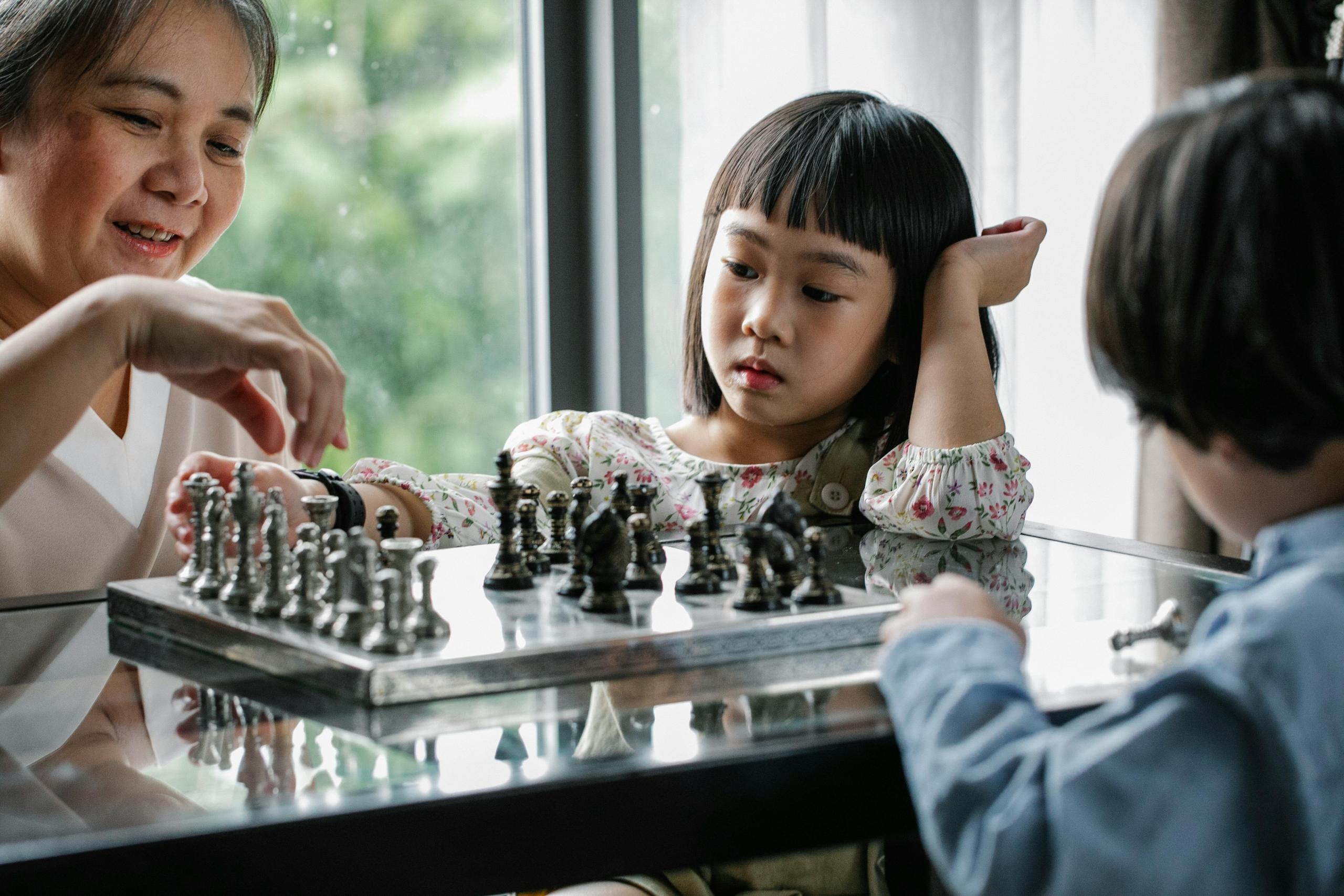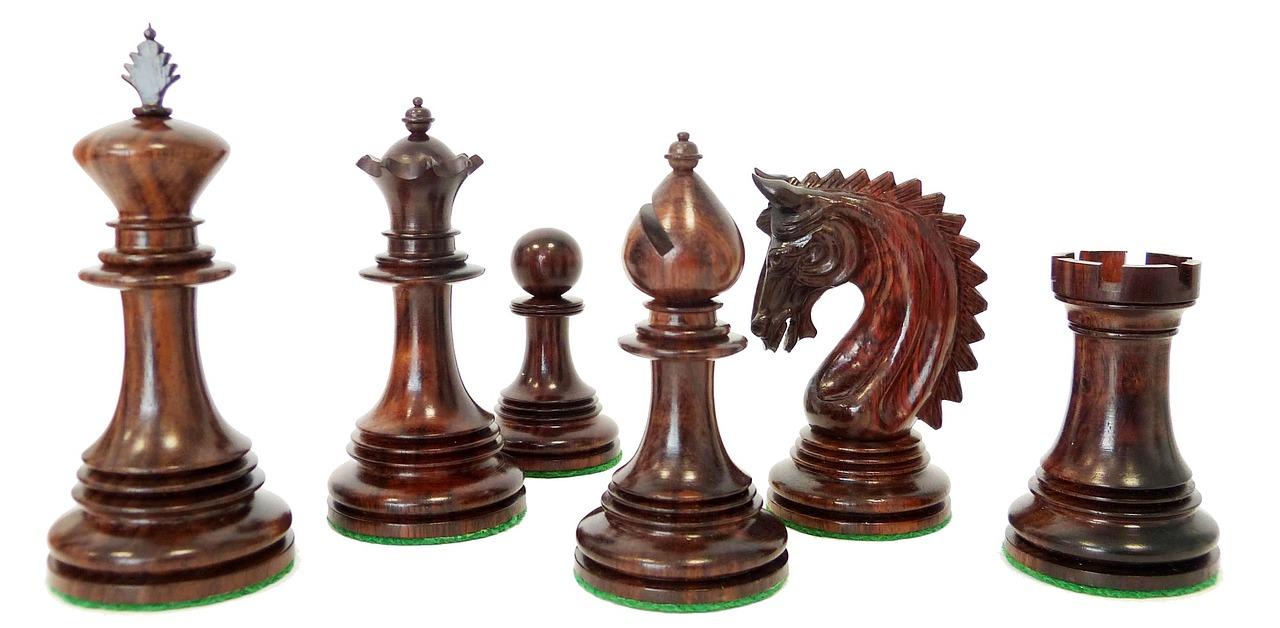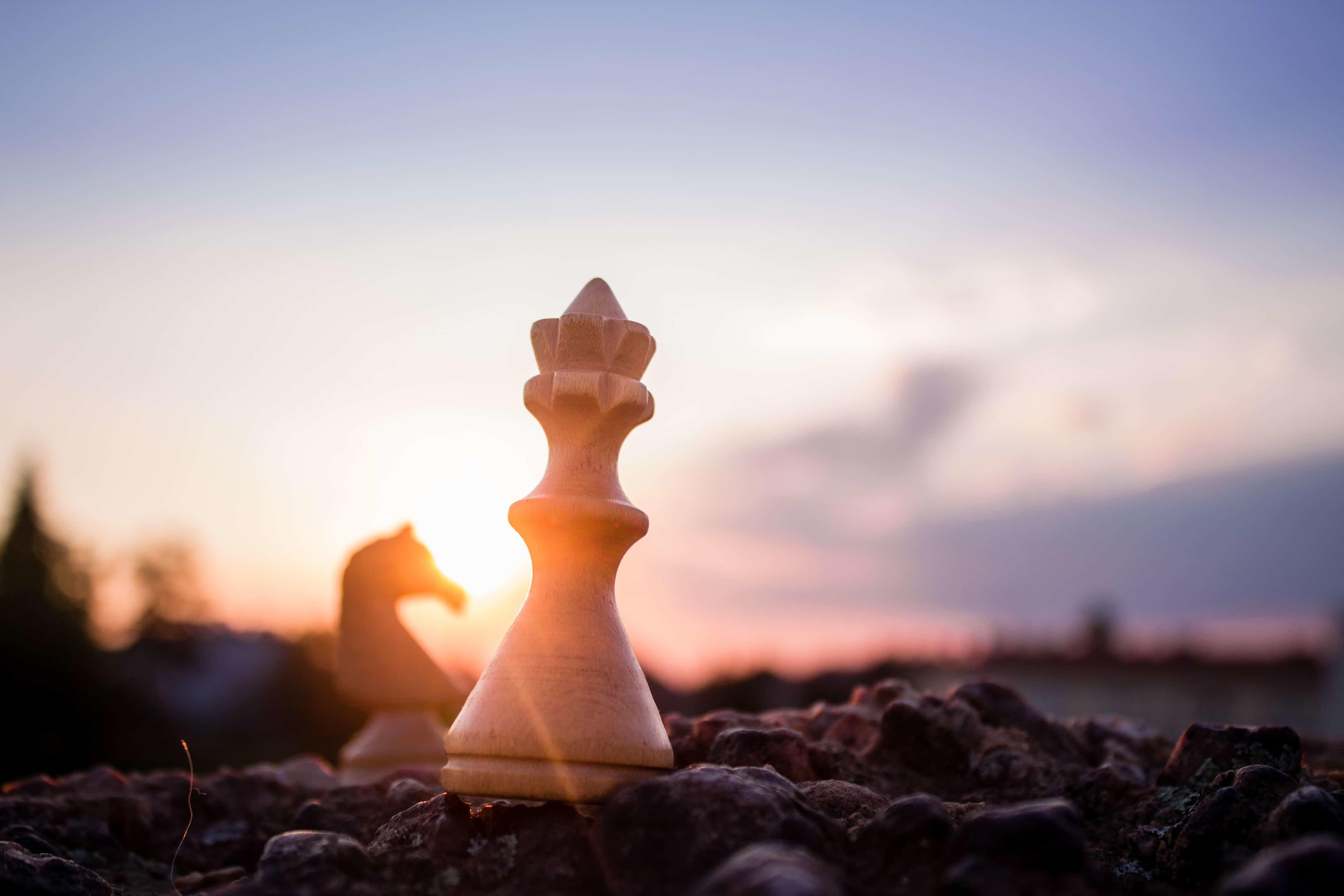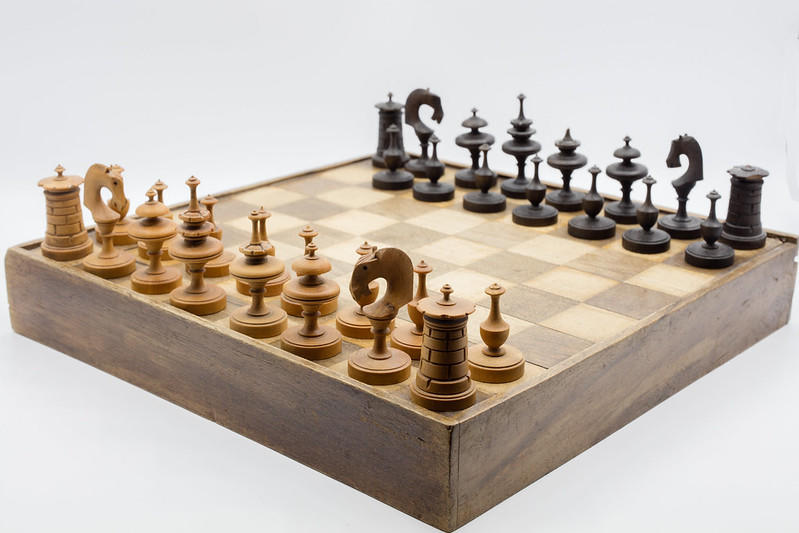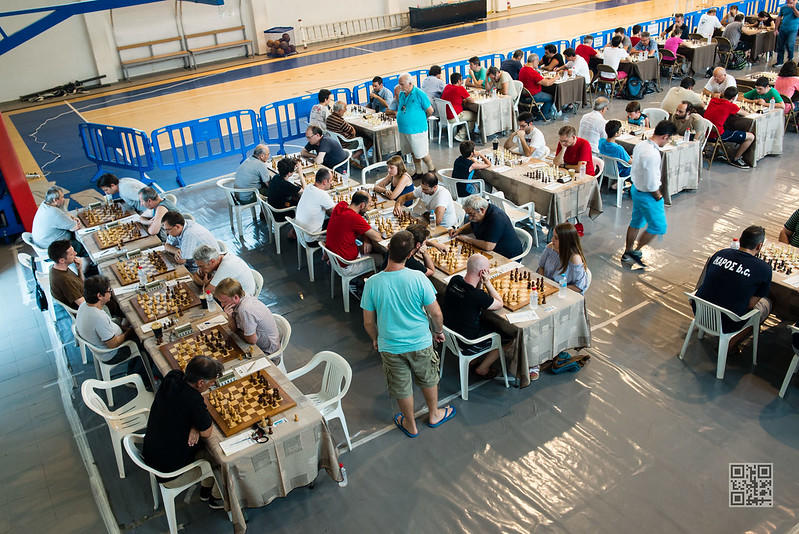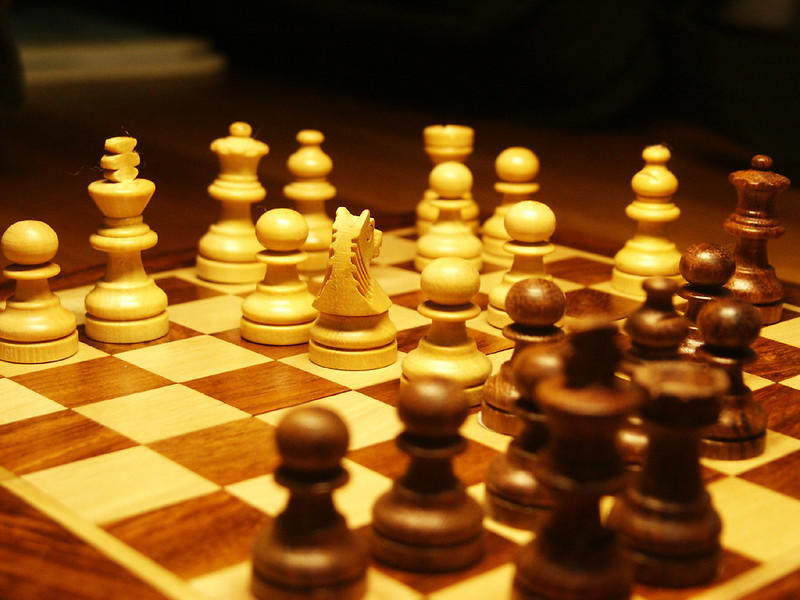Every chess master was once a beginner.
Irving Chernev
People that aspire to play chess are following in the footsteps of giants. Chess is a game that has fascinated some of the greatest minds in history. Many young people start learning chess because they love gaming, have a family member that plays, or want to be part of a chess-playing community.
And while chess is is a game that beguiles and absorbs adults of high intellect, it is also still a game that people from all walks of life, including children, can play. All you need is a set of chess pieces and a board, a willing opponent, and a desire to learn the many intricacies of the game.
Chess gaming is a lifelong pursuit that can serve as a source of joy as well as an intellectual challenge. If you are an aspiring chess player, or have children that you believe will love the game, you are in the right place. This article is for anyone that has ever wished to learn chess, and is wondering whether it is time to start. We will explore chess board setup, rules, strategies, tactics, and the best ways to learn the game.
Let's get started by exploring the top reasons to learn chess.
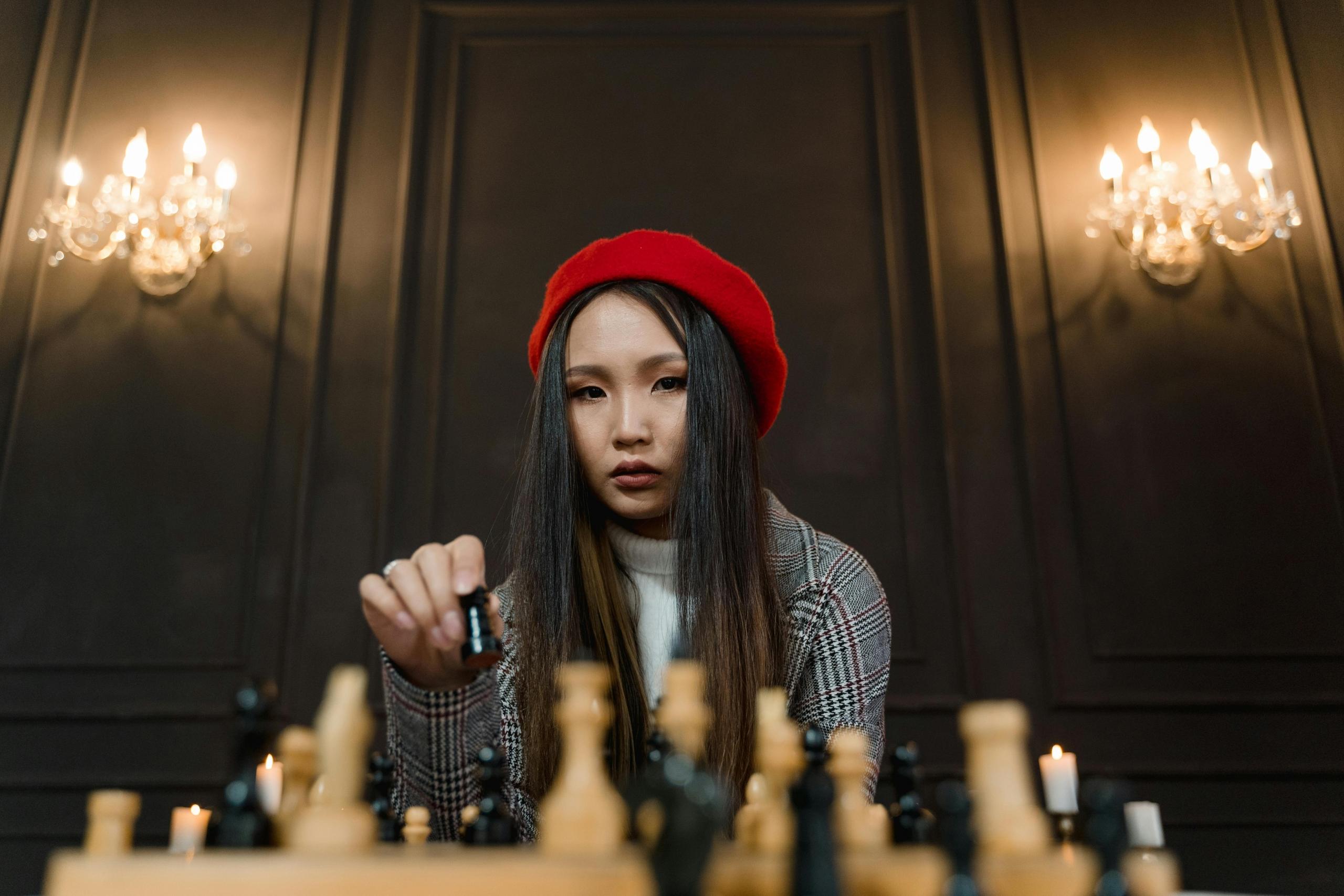

The Top Reasons to Learn Chess
Chess is a game that has been played for centuries because it is mentally challenging and exciting. People of all ages play, from children to seniors. Many people play competitively - you may have gotten a sense of how competitive chess can be from shows like the Queen’s Gambit!
There are a lot of great reasons to get started in chess. Here are the top three!
- Acquire a Pastime that Brings you Joy. When you learn chess, you are not just learning a game but acquiring a pastime that will bring you entertainment, happiness, and fun for life. Chess is not a game one learns overnight - it is one that you will continuously learn and improve upon for years through gameplay, study, games, and more.
- Keep your mind sharp. Chess is a game that will stretch your thinking in terms of strategy and tactics. You must constantly anticipate the moves of your opponent, and consider what moves you will need to win.
- Build your social circle. When you start playing chess, you can join clubs, community groups, or tournaments where you will become part of a new social circle. Having friends with shared interests is a true gift, and you will be personally rewarded by the relationships you build.
Once you know the basics of chess, how do you improve the way you play the game? How do you become a more strategic player? Learn eight approaches that will make you more competitive when it’s time to play.
The Basics of Chess
While the game of chess may seem rather straightforward - we can all picture the simplicity of black and white checkered squares - there are actually many elements that go into chessboard setup and game play.
Let's start by reviewing some terminology you are sure to encounter in any conversation about chess.
What are the Key Terms in Chess?
True beginners may find the world of chess overwhelming from the start, with so many new terms and rules to learn. Here are just a handful of words you will want to become familiar with before you start to play.
- Chess Pieces and Board: King, Queen, Rook, Bishop, Knight, Pawn
- Movement and Gameplay: Check, checkmate, stalemate, castling, en passant, promotion
- Strategic and Tactical concepts: fork, pin, skewer, discovered attack, double check, deflection, decoy, interference, zwischenzug
- Game Phases: opening, middle game, endgame, centre, file, rank, diagonal
- Game outcomes: win, draw, resignation, blunder, mistake, inaccuracy
As you read this article, you will learn the definitions of much of this terminology.
Learning chess is fun, rewarding, and complex. A good starting point for learning chess is understanding each piece and their move.
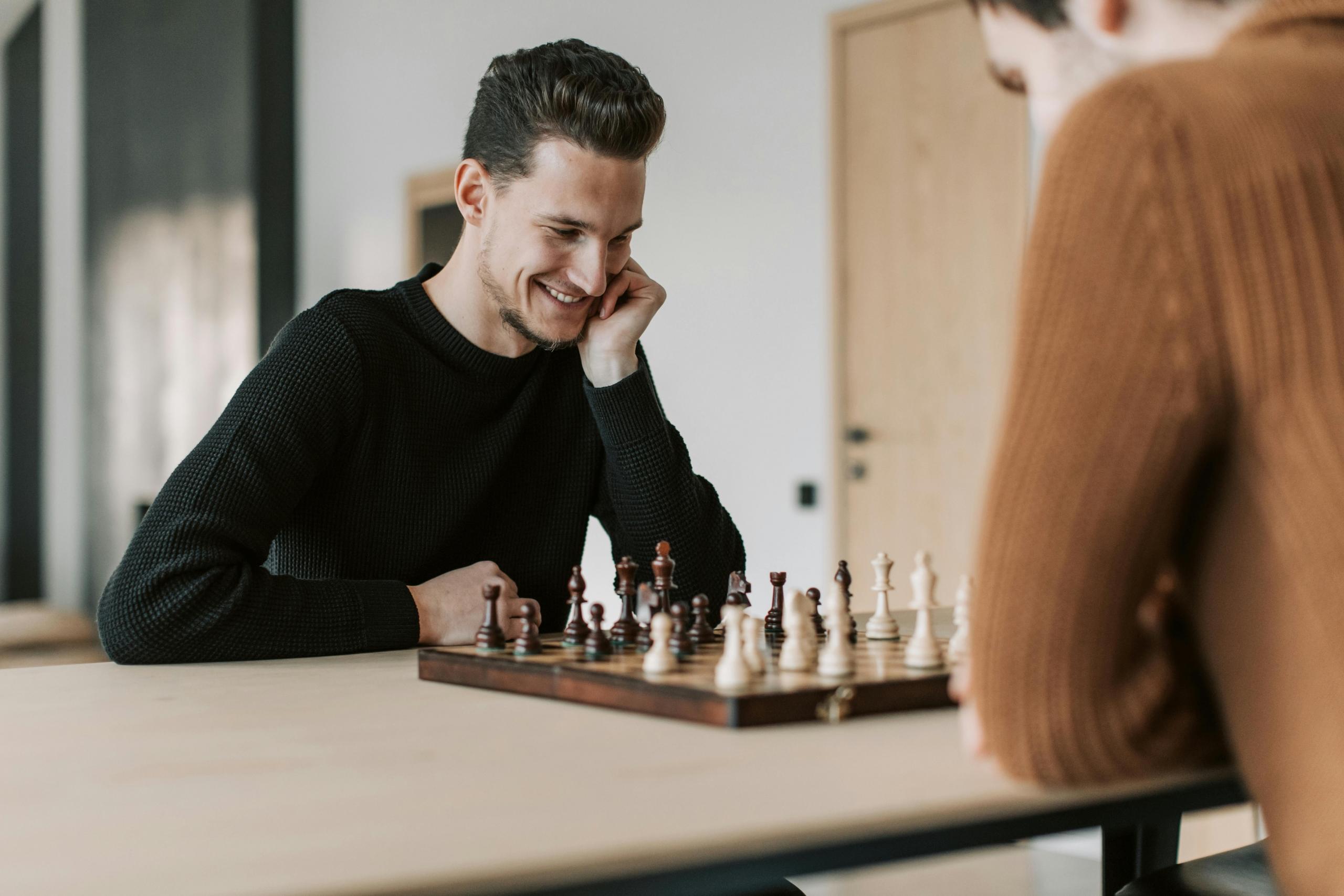
What is the Chess Board Setup?
A chessboard made up of of an 8x8 grid, with a total of 64 squares. Squares alternate in colour from light to dark. Many chessboards are black and white, but it is typical to see chessboards that are made from stained wood that alternate from dark brown to blonde wood.
The chessboard and chess moves are often identified by a coordinate system, made up of letters and numbers. The coordinate system helps to identify the exact position of a piece and is used when analyzing player moves.
The vertical columns are known as files, and they are labeled from a-h from the left side of the “white” or lighter player’s perspective (the player that uses the lighter chess pieces). Ranks are horizontal rows, numbered 1-8 from the bottom side of the “white” or lighter player’s perspective.
Place the the board so that each player has a light-coloured or white square in the bottom right corner. This ensures correct positioning and symmetrical setup.
What chess pieces are used?
The first thing you will want to do when setting up the chess board is make sure that you have all the right pieces. In any chess game, each player starts with 16 pieces:
1 King
1 Queen
2 Rooks
2 Knights
2 Bishops
8 Pawns
Here is a summary of the chess board layout:
White Pieces: First and Second Ranks
First Rank (Back Rank):
a1: Rook
b1: Knight
c1: Bishop
d1: Queen
e1: King
f1: Bishop
g1: Knight
h1: Rook
Second Rank:
a2 to h2: Pawns
Black Pieces: Seventh and Eighth Ranks
Eighth Rank (Back Rank):
a8: Rook
b8: Knight
c8: Bishop
d8: Queen
e8: King
f8: Bishop
g8: Knight
h8: Rook
Seventh Rank:
a7 to h7: Pawns
What are the Rules of Chess?
The goal of chess is to put the opponent's king piece in check. A player wins the game when the opponent’s king is in checkmate. A stalemate occurs if a player cannot move according to the rules and their king is not in check. Players can also end by mutual agreement.
During the game, players take turns moving a piece per turn. When a piece moves to a square occupied by an opponent’s piece, their piece is captured and removed from the board.
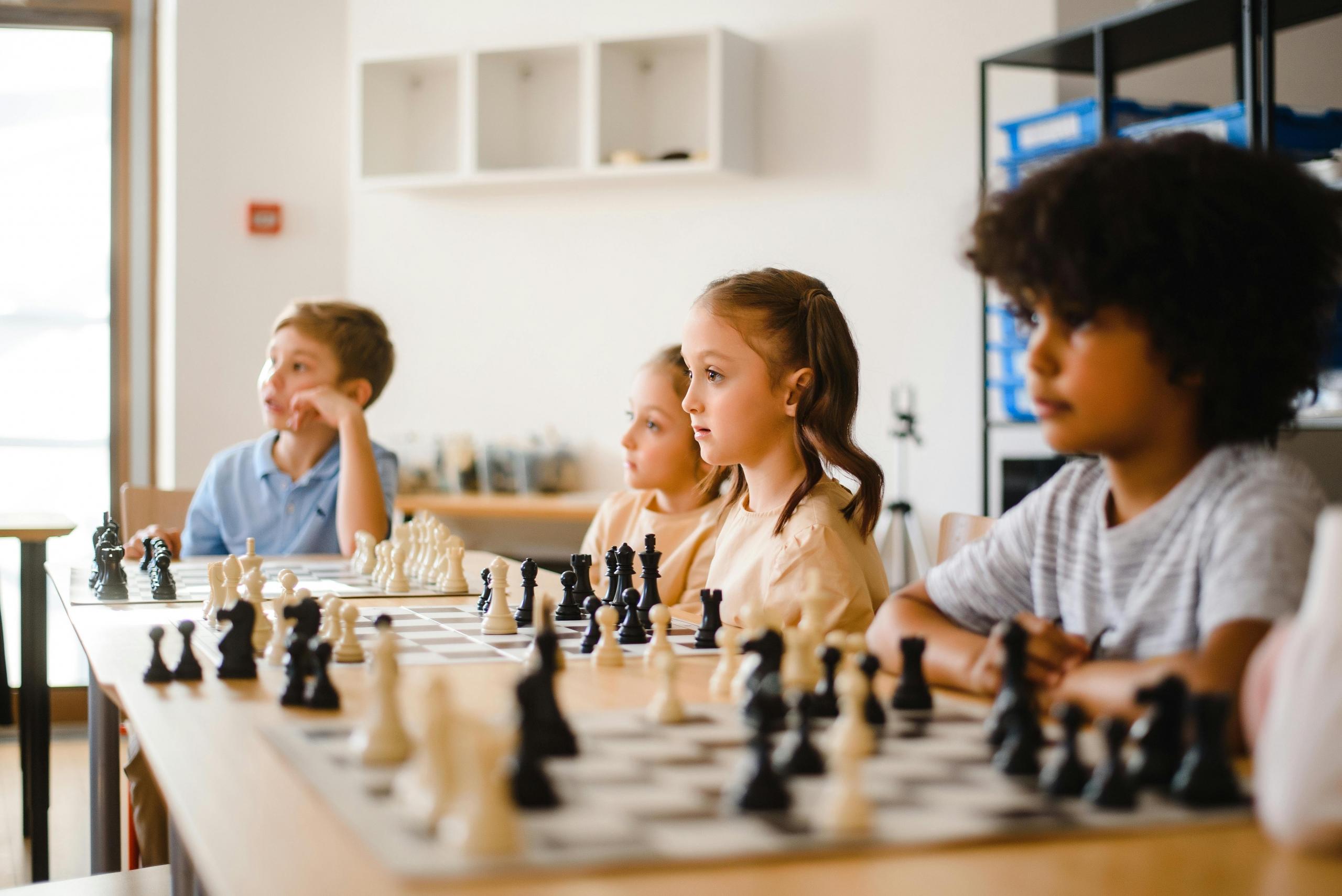
What are the Moves and Value of the Chess Pieces?
| Chess Piece | Moves Rule | Value |
| King | The king moves one square in any direction - horizontally, vertically, or diagonally. The king’s move is castling: moving two squares towards a rook and moving that rook to the square beside the king on its opposite side. | considered infinite, or invaluable. Its capture means the end of the game. |
| Queen | The queen can move in any direction for any number of squares (horizontally, vertically, or diagonally); she combine the movements of the rook and the bishop. | 9 points |
| Rook | The rook can move horizontally or vertically for any number of squares and are powerful. | 5 points |
| Bishop | The bishop can move diagonally for any number of squares. It starts on either a light or dark square and remains on that colour for the duration of the game. Bishops are effective when they can move without obstruction. | 3 points |
| Knight | The knight moves in the shape of an “L’ - two squares in one direction, either horizontal or vertical, and then one square perpendicular. Unlike other chess pieces, the knight can jump over others. | 3 points |
| Pawn | The pawn can move forward one square, and can capture diagonally a square forward. For its first move, a pawn can move forward two squares instead of one. The knight can do a special capture called “en passant”, in which a pawn moves two squares forward from its starting position and lands beside an opponents pawn. When a pawn reaches the other side of the board, it must be promoted to either a queen, rook, bishop, or knight. | 1 point |

What Steps Can I Take to Improve my Chess Game?
Get Lots of Playing Practice
Playing and practicing chess is a surefire way to get better at it. Like any game, you become better the more you work at it, and take opportunities to try new moves.
Play in low-risk environments, such as with clubs, family members, or friends that you enjoy. Of course, balance fun with some healthy competition: play with others that have equal or similar skill, or even players who are better than you so you can learn from them.
If you have just started playing chess, it is likely that you are eager to learn more about how you can improve your play. Find out more about the most commonly used chess tactics.

Understand Openings
What are “openings” in chess? Openings are the initial stage of a chess game, or common sequences of moves that have been widely studied by chess professionals and enthusiasts.
While some chess guides may convince you that you don’t need to memorize chess openings right away, more experienced players may find it useful and fascinating to know more about them and how they impact the trajectory of a game.
Choose a few openings for both white and black to learn and test out. Some openings include:
- Ruy Lopez
- Italian Game
- Caro-Kann Defense
- Pirc Defence
- English Opening
There are a lot of openings out there - so start small and grow from there!
Develop Your Middlegame
Just as it is important to think and plan your openings, understanding how to develop your middlegame is key. As you transition from the opening phase, strategic planning, piece coordination, and tactical awareness is critical.
Make sure all of your pieces are active and positioned well: place your rooks on open or semi-open files, and your knights on strong outposts. Your King should also be safe: start castling early. Maintain a pawn shield around your king.
Aim to control the central squares with your pawns and pieces. When you have strong central control, your pieces have more mobility and influence.

Watch for Blunders
Blunders are major mistakes that result in significant losses in chess. Blunders typically occur due to oversight, a lapse in concentration, or miscalculation. Avoid leaving pieces unprotected (hanging pieces), or placing a piece where it can be captured by an opponent’s piece without compensation (piece en prise).
Make sure you are not weakening your King’s position, and keep an eye out for combinations of moves your opponent is using to build an advantage.
Sometimes the pressure of time can lead to playing too quickly, or "blitzing". If you feel like you are making panic moves and are not making proper calculation or consideration, take a deep breath and a few extra seconds to get yourself together.
Practice your Endgame
As a chess player, you will need to understand the fundamentals of endgames. The endgame is the phase of chess that occurs after most of the piece have been exchanged. There is a focus on promoting pawns, using the king actively, and achieving checkmate or a draw. Some of the most common endgames are:
- King and Pawn vs. King: promote a pawn with the support of the king, and prevent the opponent from doing the same.
- King and Rook vs. King: force a checkmate with a king and rook against a king.
- King and Queen vs. King: understand how to use the king and queen to force checkmate on a lone king.
- Rook endgame: Lucena and Philidor positions demonstrate how to win with a common rook.
By studying key endgames, you will improve your chess skills and have better overall performance when playing.
Analyze Games and Learn from Losses
Learning from previous games and analyzing your losses is a highly effective way to enhance your chess game. Think critically about your blunders, mistakes, and missed opportunities, even if it hurts after a big loss!
What are Chess Tactics?
Chess tactics are combinations or sequences of moves used to create one or more immediate threats against an opponent. Such threats include: a check, a material threat, a checkmating sequence, the threat of another tactic.
Tactics culminate when the opponent cannot respond to the threats without making some sort of concession. Players mostly use different tactics to gain advantages, either through gaining you opponents pieces or assuming a better position. Other times, tactics are used as defensive measures, to salvage material that might be lost, or to push the game to a stalemate when loss is a strong possibility.
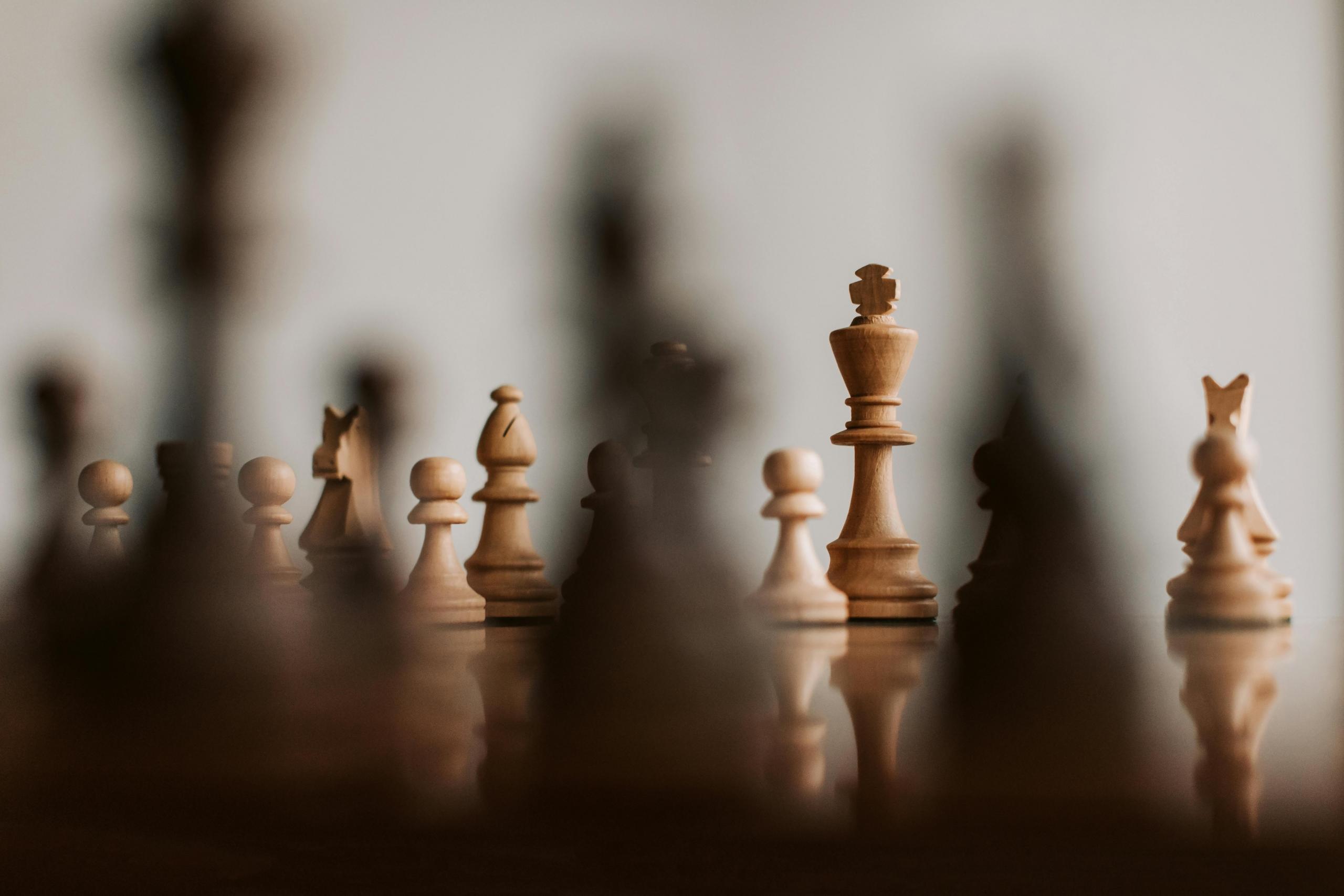
What are Common Chess Tactics?
Fork (Double Attack)
In a fork, a single piece makes two or more simultaneous attacks. Two opponent pieces, or a piece and a square are targeted at the same time. For example, a knight on e5 attacking a king on g8 and a rook on c6.
Pin
A pin is when a piece is cannot move without exposing a more valuable piece for capture, such as a king or queen. When “absolute pin” is used, the pinned piece cannot legally move because it results in exposing the king to check. In a “relative pin”, the pinned piece can move but would expose a more valuable piece for capture.
Skewer
A skewer is when a piece attacks the opponent’s valuable piece, and when the valuable piece moves, a less valuable piece is captured.
Double Check
A double check is when two pieces deliver a check at the same time. The only escape from a double check is to move the king.
Deflection
A deflection is when a player forces their opponent’s piece to move from a crucial square. The player gets a tactical advantage like checkmate or material gain. For example, a player might sacrifice a piece to lure the opponent from its defence of an important square.
Decoy
A decoy is when a player forces the opponent’s piece to move to a square where it will be attacked by another tactic.
Interference
A player causes interference when they place a piece between two opponent pieces to disrupt their coordination.
Chess is a game that continues to capture the interest of people from all walks of life. When getting started in chess, it is important to learn the game, its terminology, and some basic tips to play.
What is the Difference Between Tactics and Strategy?
You may be wondering what the differences are between chess tactics and strategies. While the concepts have some similarities, they actually refer to two very different things.
Tactics involve a concrete sequence of moves that are used in the short term. Tactics are usually forced and depend on precise calculation, and result in immediate gain and positional advantage.
In contrast, strategy in chess is all about long term-planning and overall management. You should have a firm understanding of positional elements, pieces, and key squares to develop and utilize different strategies effectively.
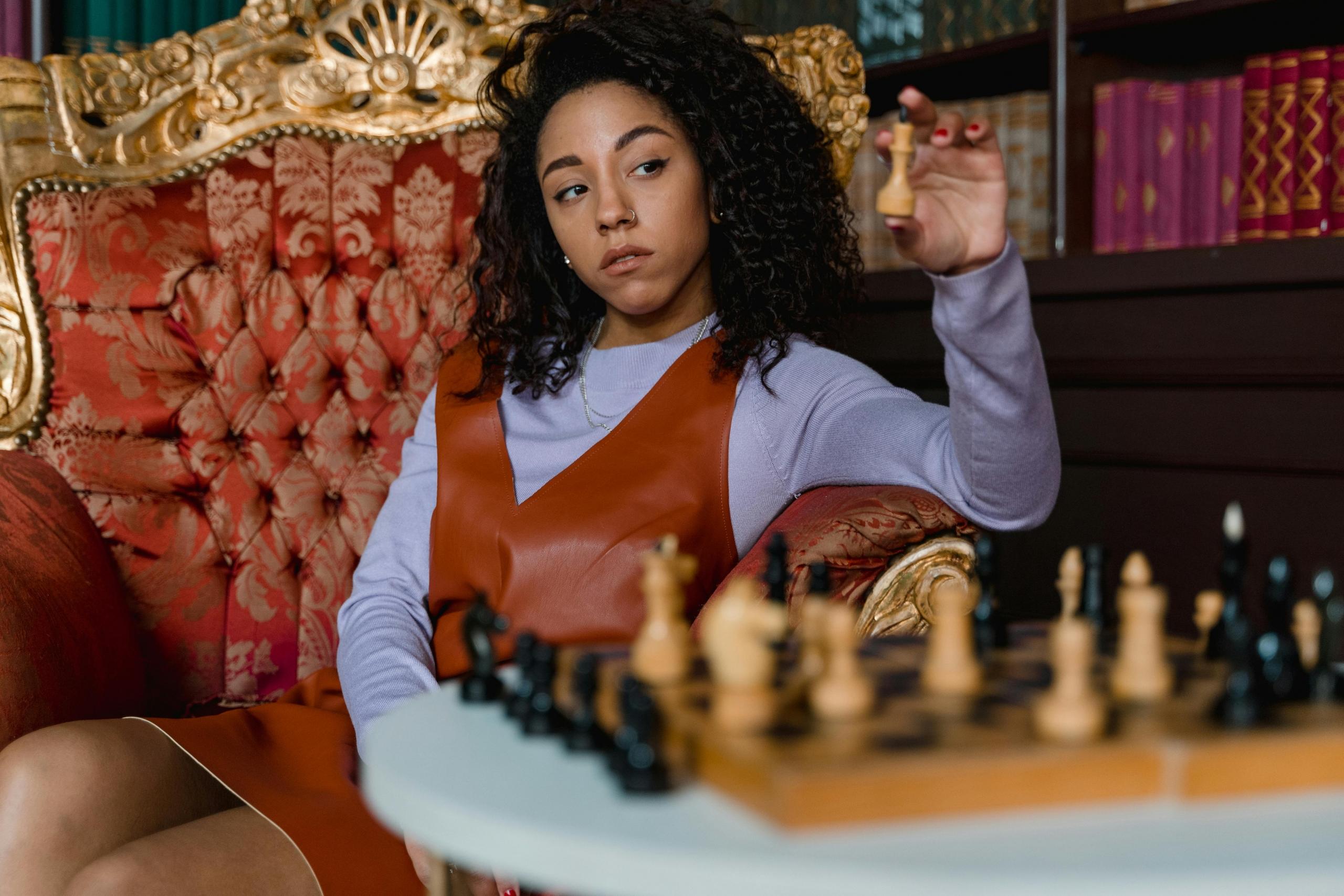
Can I Learn Chess Independently?
Learn chess independently by starting with your own online or book research. Use videos that explain chess with examples, check out a wikihow, or read books that tell you step by step how to get started.
Alternatively, you can join a chess club in your school or local community centre. In a chess club, you will find people who can show you the rules and help you to grow as a player.
Try playing with a patient, experienced opponent, or a friend who may also be learning. Don’t be afraid to make mistakes - this is often the best way to learn the game.
You can also find plenty of chess apps where you can play with an unknown or digital opponent. With lots of practice, you’ll build your skills quickly.
Is it Worthwhile to Get a Private Chess Teacher?
A private chess instructor or tutor will help you to speed your chess learning journey. They can show you different strategies and tactics, and meet your individual needs.
It can be an empowering learning experience to play and practice chess with an experienced player who is understands how to teach chess to beginners. They can create different game scenarios that match your level of play, and plan instruction so you are learning in a systematic way.
Private chess instruction is a great choice for families that want to see their kids learn chess, but do not have the time or knowledge to teach them. Find a chess tutor who is used to working with children, and you will not only help your child to learn chess but give them a fun activity to play with friends.
While the chessboard may seem rather straightforward - we can all picture the simplicity of black and white checkered squares - there are actually many elements that go into chessboard setup.

How do I Find a Private Chess Tutor?
Finding a chess tutor is the easiest with the Superprof Canada site. The Superprof connects students of chess to private instructors who can help beginning to advanced players of chess.
The user-friendly site has a search tool that displays available tutors when prompted. See all available chess tutors near you or across Canada, should you be interested in learning virtually.
We recommend that you read at the individual profiles of each tutor, and see if they have experience or interest teaching chess for beginners. If you are looking for a child, be sure to contact only those that are qualified and experienced at working with kids.
Contact only those tutors you are interested in working with to see who will be the best fit for your learning needs.
Learn chess with a Superprof tutor!

